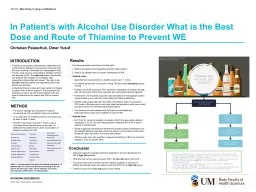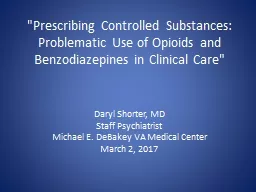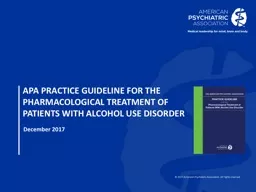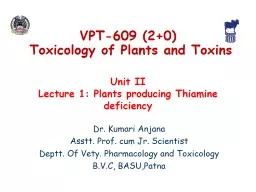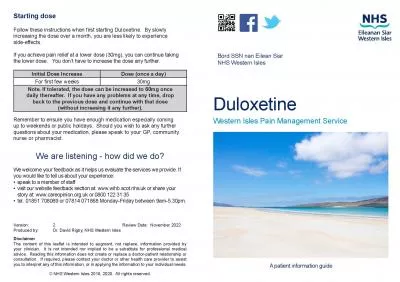PPT-In Patient’s with Alcohol Use Disorder What is the Best Dose and Route of Thiamine to
Author : LoneWolf | Published Date : 2022-08-02
ACKNOWLEDGEMENTS Omer Yusuf Aaron Guinn Carol Cooke METHOD The search strategy was focussed on trying to accumulate as many academic papers as possible A concept
Presentation Embed Code
Download Presentation
Download Presentation The PPT/PDF document "In Patient’s with Alcohol Use Disorder..." is the property of its rightful owner. Permission is granted to download and print the materials on this website for personal, non-commercial use only, and to display it on your personal computer provided you do not modify the materials and that you retain all copyright notices contained in the materials. By downloading content from our website, you accept the terms of this agreement.
In Patient’s with Alcohol Use Disorder What is the Best Dose and Route of Thiamine to: Transcript
Download Rules Of Document
"In Patient’s with Alcohol Use Disorder What is the Best Dose and Route of Thiamine to"The content belongs to its owner. You may download and print it for personal use, without modification, and keep all copyright notices. By downloading, you agree to these terms.
Related Documents

